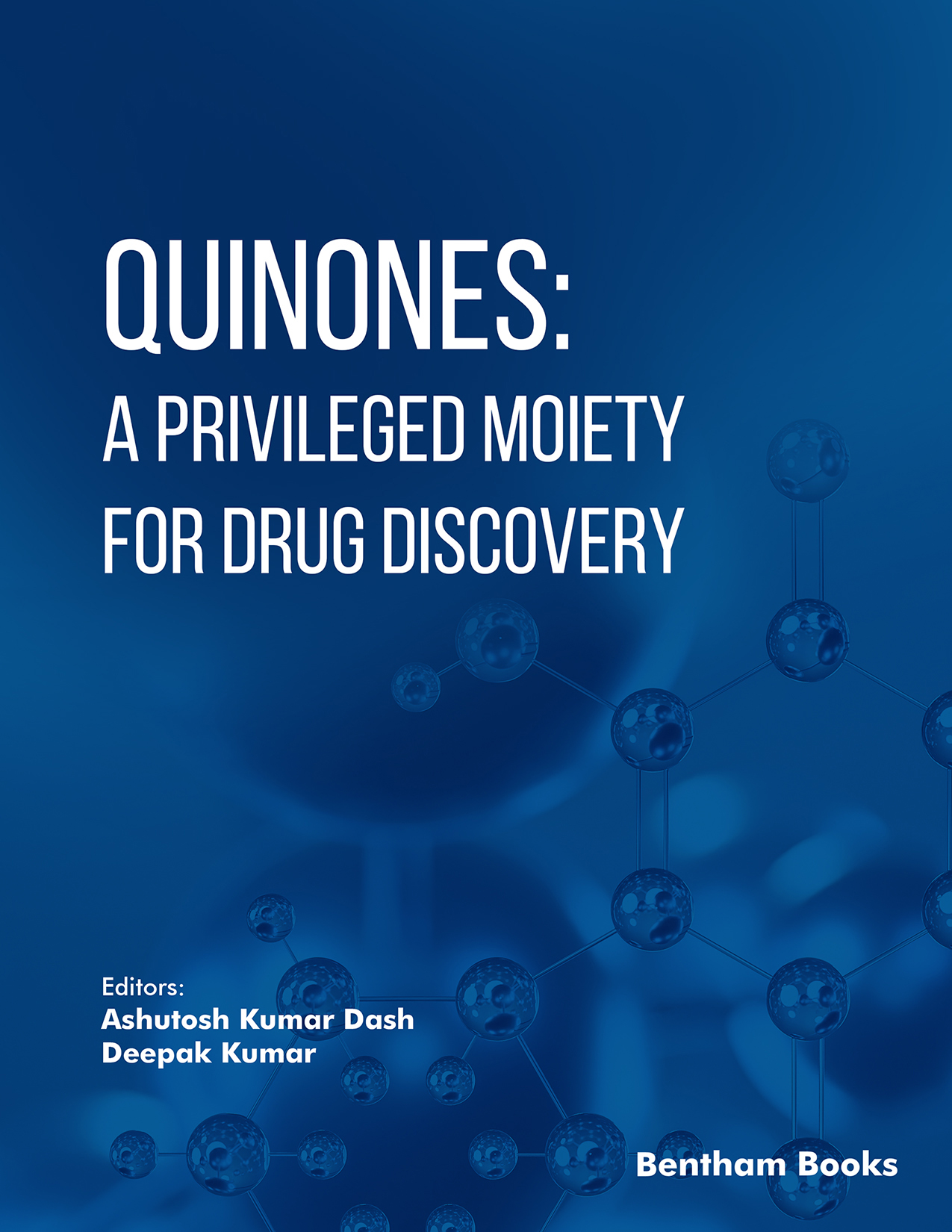Quinones constitute a major class of organic compounds that contain conjugated cyclic dione structures prevalent both in natural as well as synthetic organic chemistry. Naturally, quinones are rich in angiosperms, fungi (including lichens), bacteria, algae, ferns, conifers, sponges, etc., and also in human beings. Hence, a lot of traditional Asian therapies include quinone as Ayurvedic medicine. These can be frequently accessed from reactive aromatic compounds, such as phenols or catechols, very easily. The topic “Quinone derivatives as drug candidates” is a vital point of discussion as they have a unique property to bind to multiple targets with excellent affinity. They are electrophilically reactive and covalently bind to nucleophilic sites within cells through the formation of oxidized cellular macromolecules, including lipids, proteins, and DNA. Hence, we can consider it as a privileged moiety for potential pharmacological activities. Due to its high redox ability, semiquinone radical can construct ROS (reactive oxygen species). Quinones are cast-off for electron and proton transport (Co-enzymes/ Cofactors) and are extremely tunable and versatile in function. With regard to biological activities, quinones and their derivatives have been proclaimed as antitumor, antibacterial, antifungal, antiviral, antimalarial, anti-AD, and anti-epileptic agents. They have various mechanisms of action for biological activities, including ROS, GSH, NADPH, P450s, (COX-2), glutathione S-transferase (GST), (NQO1), DNA, etc., as receptors. If we collect quinone containing marketed drugs, we will get n-number. Some of them are Atovaquone, Flaviolin, buparvaquone, Seratrodast, doxorubicin, Emodin, mitomycins, Duroquinone, Mitoxantrone, Porfiromycin, Parvaquone, Valrubicin, etc. Quinones assist as indicators that transform in physical presence, hence used as dyes. The negative side of quinone is also an important point of discussion, such as toxicity profile (quinone toxicity can arise because of their use as well as by the metabolism of other drugs and various environmental toxins or dietary constituents). Quinones as drugs can also considered for organisms other than human beings, such as plants. Antifungal drugs include Chlonil, chlorothalonil, etc. Some napthoquinones (Duniones) have been marketed as insecticides, pesticides, etc. Some drug-like molecules containing quinones are under FDA approval, viz vatiquinone from PTC Therapeutics, which will be used against epilepsy. The modern trends of quinones are discussed as a concluding chapter of the book.
Ashutosh Kumar Dash
R & D, Drug Discovery Division
Macleods Pharmaceuticals, India
&
Deepak Kumar
Department of Pharmaceutical Chemistry
School of Pharmaceutical Sciences, Shoolini University
Solan-173229, Himachal Pradesh
India

